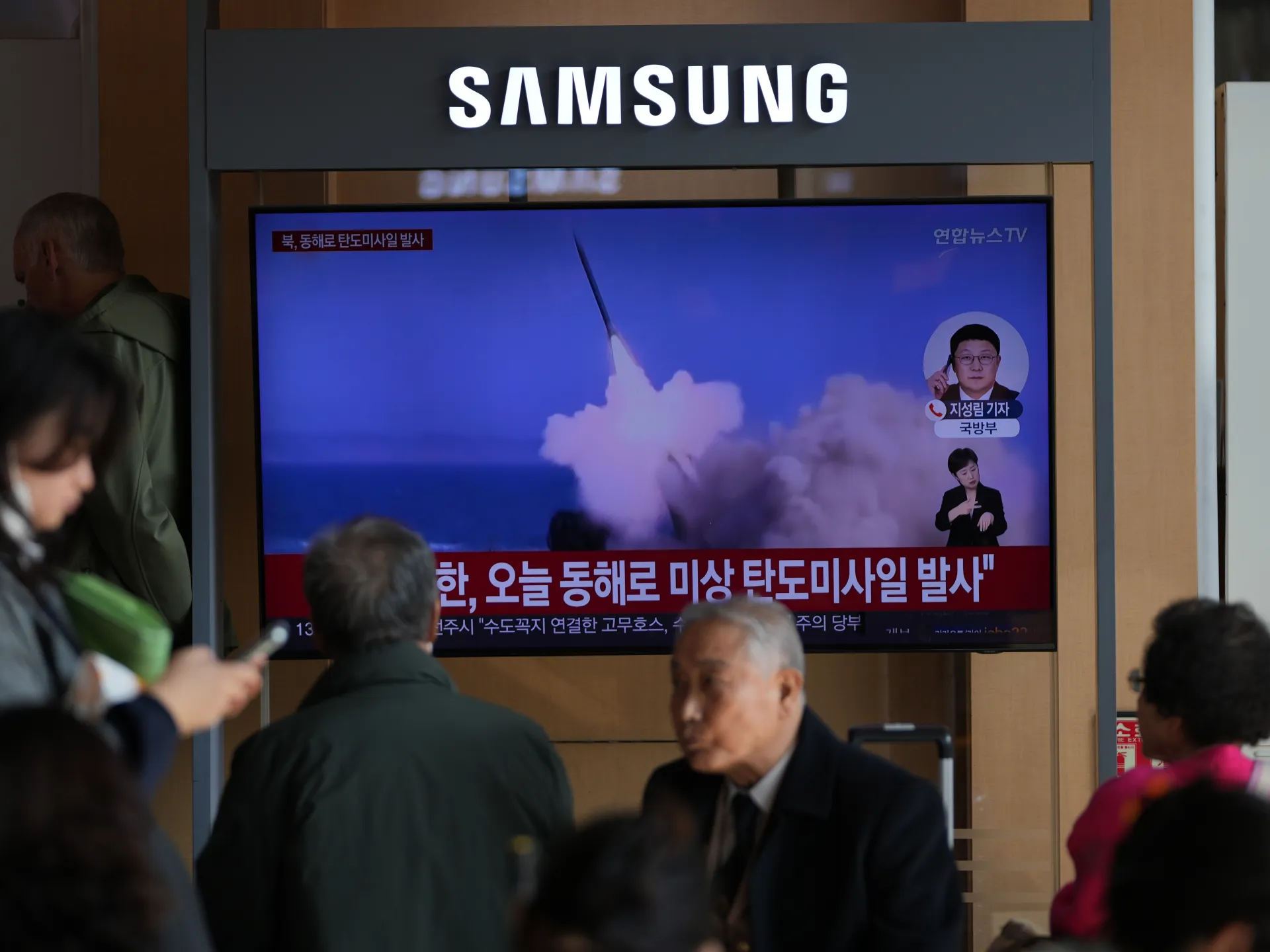North Korea fires ballistic missile days after Hegseth visit, says Seoul | Kim Jong Un News
The short-range weapon is believed to have flown 700km (435 miles) and landed in the East Sea, otherwise known as the Sea of Japan.
Published On 7 Nov 2025
North Korea has fired at least one ballistic missile towards its eastern waters, the South Korean military has said, just days after United States Defense Secretary Pete Hegseth visited South Korea for annual security talks.
South Korea’s Joint Chiefs of Staff confirmed the development on Friday, saying the short-range missile flew 700km (435 miles) towards the East Sea, otherwise known as the Sea of Japan.
Recommended Stories
list of 3 itemsend of list
The Japanese government also said North Korea had launched a missile, adding that it is likely to have fallen in waters outside of Japan’s exclusive economic zone.
Pyongyang’s latest launch comes four days after South Korea said its neighbour had fired 10 rounds of artillery into its western waters, and about a week after US President Donald Trump gave Seoul permission to build a nuclear-powered submarine.
Experts say the move, which will see South Korea join a small club of countries using such vessels, will greatly enhance its naval and defence capabilities.
South Korea wants to receive enriched uranium from the US to use as fuel for the nuclear-powered submarine, which it plans to build at home, a South Korean presidential official said on Friday.
Since they both took office earlier this year, Trump and his South Korean counterpart Lee Jae Myung have sought to restart dialogue with North Korean leader Kim Jong Un.
However, Kim has shunned any talks with Washington and Seoul since previous discussions with the US collapsed in 2019.
North Korea’s leader said in September that he was open to talks provided that the US drop its demand for Pyongyang to give up its nuclear weapons. He has repeatedly said his country is an “irreversible” nuclear state.
Last month, Kim attended a major military parade in Pyongyang, along with high-level officials from allied countries, including Russia and China. It showcased some of his nation’s most powerful weapons, including a new intercontinental ballistic missile.
North Korean and Russian military officials met in Pyongyang this week to discuss strengthening cooperation, North Korea’s official Korean Central News Agency (KCNA) said on Friday.
Pak Yong Il, vice director of the Korean People’s Army’s General Political Bureau, met a Russian delegation led by Vice Defence Minister Viktor Goremykin on Wednesday.
KCNA said the allies discussed expanding ties as part of the “deepened bilateral relations” agreed between Kim and Russian President Vladimir Putin.
Earlier this week, South Korea’s spy agency said it had detected possible recruitment and training activities in North Korea, noting this could signal a potential further deployment of troops to Russia.
So far, Seoul estimates that Pyongyang has sent 15,000 soldiers to Russia to aid it in its war against Ukraine, and large numbers have died on the battlefield there.
On Tuesday, the South Korean National Intelligence Service also said it believes that Kim has dispatched about 5,000 military construction troops to its ally since September to help with infrastructure restoration projects.
